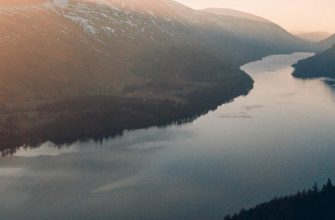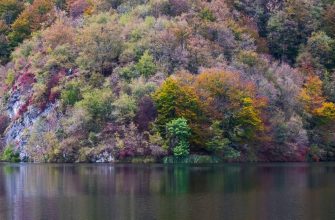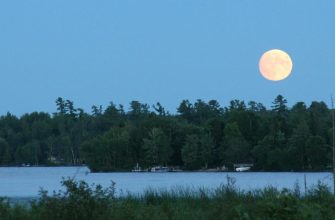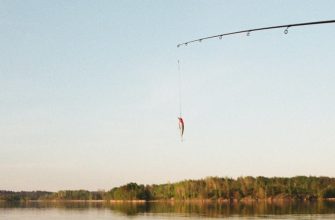- Overview of Michigan Water
- The Majestic Beauty of Michigan Lake
- Lake Location, Size, and Depth
- Exploring the Untouched Waters of Michigan Lake
- Understanding the Unique Biosystem of Lake Michigan
- Species for Catch in Lake Michigan
- Salmon and Trout
- Chinook Salmon
- Coho Salmon
- Steelhead (Rainbow Trout)
- Brown Trout
- Brook Trout
- Lake Trout
- Near Shore Types of Fish in Lake Michigan
- Bullheads
- Largemouth Bass
- Northern Pike
- Lake Sturgeon
- Yellow Perch
- Walleye
- Channel Catfish
- Crappie
- Muskellunge
- Other Species for Angling in Michigan Lake
- Whitefish
- Sea Lamprey
- Rainbow Smelt
- Alewife
- Round Goby
- The Introduction of Predator Fish Species to Lake Michigan
- The Impact of Predator Fish Species on Lake Ecosystem
- History of Predator Species in Lake
- Managing Predator Species in Lake
- Ecological Effects of Introducing Predator Fish in Lake
- What Types of Fishing are Available on Lake Michigan?
- From a Boat
- From Shore
- From a Kayak
- Ice Fishing
- Ice Fishing Charters in Michigan Lake
- Where Are the Best Places to Fish Lake Michigan?
- Exploring the North Shore
- Uncovering the Charms of the Windy City
- Discovering the Michigan Waters
- Navigating the Indiana Waters
- Lake Michigan Seasonality
- Early Summer: A Time of Spawning and Growth
- Fall: The Season of Transition
- Winter: A Challenging Adventure
- Spring: Rebirth and Renewal
- Seasonal Highlights: What to Expect at Different Times of the Year in Lake
- Lake Michigan Rules and Regulations
- Angling License and Permits
- Obtaining an Angling License
- Special Permits
- Navigating the Legal Waters
- Seasonal Restrictions
- Size and Catch Limits
- Fishing Etiquette
- Leave No Trace
- Respect Wildlife
- Be Mindful of Others
- Charter Fishing Trips
- Embark on an Unforgettable Charter Fishing Trip
- Jack’s Charter Service
- Bucket List Fishing Charters
- Dan Nealy’s Fishing Buddies
- Last Call Sportfishing Charters
- Pro Fish’n Sea Charters
- Conservation Efforts to Preserve Lake-Rich Biodiversity
- Understanding the Importance of Fishery
- Conservation Efforts to Preserve Lake Fishery
- FAQs
- Q: What are some popular fish species found in Lake Michigan?
- Q: How long can the fish in Lake Michigan grow?
- Q: Which fish in Lake Michigan exhibit seasonal migration patterns?
- Q: What are some key features of the fish found in Lake Michigan?
- Q: Are there any invasive fish species in Lake Michigan?
- Q: What catching techniques and lures work best in Lake Michigan?
- Q: Are there any saltwater fish species in Lake Michigan?
- Q: What is the “king salmon,” and where can it be found in Lake Michigan?
- Q: What equipment do I need for angling in Lake Michigan?
Michigan Lake, with its warmer waters, is home to a wide variety of feisty fish that attract fishermen from far and wide. Among the popular species, trout stands out as a prized catch. With its fighting spirit and delectable flesh, trout is a favorite among angling enthusiasts.
In addition to trout, Michigan Lake is also known for its population of largemouth and smallmouth bass. These native game fish are highly sought after by fishermen looking for an exciting challenge. The rocky lakeshores and shallow waters provide the perfect environment for these bass species, making it an angler’s paradise.
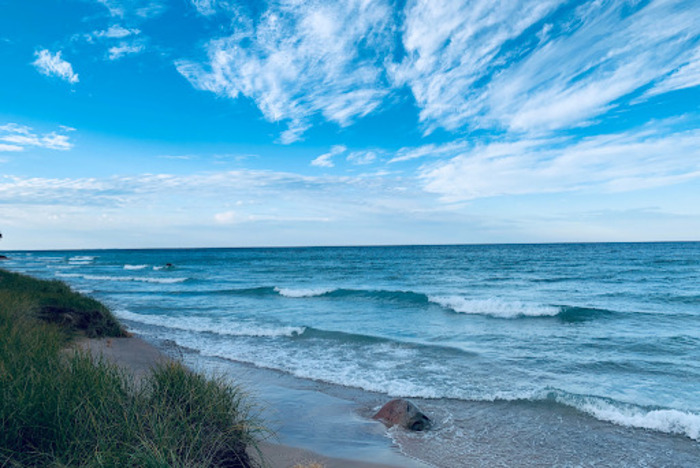
While trout and bass steal the spotlight, Michigan Lake is teeming with a diverse array of species. From salmon to steelhead, the environment of Michigan Lake offers a rich tapestry of catching opportunities. Traveling the vast waters of the lake, fishermen can explore the bountiful angling grounds and discover the beauty of the underwater world.
Stay tuned as we dive deeper into the fascinating world of catching in Michigan Lake. In our upcoming articles, we’ll explore specific types, share tips and techniques, and reveal the hidden gems that await you on your next adventure.
Join us as we embark on an unforgettable journey through the captivating waters of Michigan Lake, uncovering the secrets of its thriving fish population. Get ready to cast your line and experience the thrill of reeling in the catch of a lifetime.
Remember, catching in Michigan Lake is not just a hobby—it’s a way of life. So grab your gear, head out on a catching trip, and immerse yourself in the wonders of this magnificent inland sea.
Stay tuned for our next installments where we’ll take a closer look at the fascinating world of salmon, a true icon of the Lake Michigan fishing world. Until then, tight lines and happy catching!
Overview of Michigan Water
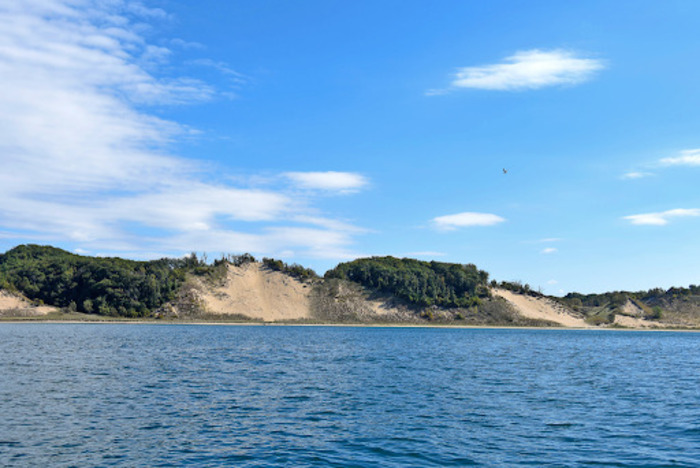
The Majestic Beauty of Michigan Lake
Lake Michigan is home to some of the most magnificent water in North America. Its vast size and pristine conditions make it a paradise for fishermen and nature enthusiasts alike. From its crystal-clear depths to its stunning lakeshore, Michigan Lake offers a truly unique and unforgettable experience.
Lake Location, Size, and Depth
Situated in the heart of the Great Lakes, Michigan Lake is known for its impressive dimensions. With a surface area of approximately 22,404 square miles, it is the second-largest of the Great Lakes by volume. Its maximum depth reaches an astounding 923 feet, making it one of the deepest freshwater lakes in the world.
Exploring the Untouched Waters of Michigan Lake
When it comes to catching, Michigan Lake provides endless opportunities. The biodiversity of the lake is astounding, with a wide variety of species calling it home. Fishermen can expect to encounter prized catches like pike, yellow perch, salmon, trout, steelhead and more.
One of the most thrilling aspects of catching in Michigan Lake is the chance to reel in trophy-sized predators. Northern pike, with their razor-sharp teeth and impressive size, are a popular target for fishermen looking for an adrenaline-filled adventure. Additionally, the lake is known for its abundance of salmon and trout, including the prized chinook salmon, which is highly sought after for its fight and delicious flavor.
Understanding the Unique Biosystem of Lake Michigan
Michigan Lake’s biosystem is a delicate balance of life and nature. It supports a diverse range of species, each playing a crucial role in maintaining the health of the lake. From tiny round gobies to majestic whitefish, every organism contributes to the intricate web of life that thrives in the Michigan waters.
To orient themselves in the diverse biosystem of the lake, anglers must understand the habits and behavior of the fish they are looking for. Whether casting from the shore or venturing out on a catching trip, knowledge of the lake’s species and their preferred environment is essential for a successful day on the water.
Species for Catch in Lake Michigan
Salmon and Trout

Chinook Salmon
These Salmon, also known as King Salmon, are a popular freshwater species found in Michigan Lake. They are known for their large size and excellent taste. King Salmon can reach weights of up to 30 pounds or more, making them a prized catch among fishermen.
These salmon species are native to the Pacific Ocean but were introduced to the Great Lakes in the late 1800s. Since then, they have established self-sustaining populations in Michigan Lake. King Salmon typically spawn in tributary streams and rivers during the fall months.
Coho Salmon
Coho Salmon, also known as Silver Salmon, is another species of salmon found in Michigan Lake. They are known for their bright silver color and acrobatic jumps when hooked. Coho Salmon are slightly smaller than King Salmon, typically ranging from 5 to 12 pounds in weight.
Similar to King Salmon, Coho Salmon were introduced to the Great Lakes and have become a popular sportfish. They are known for their aggressive nature and strong fighting ability, making them a favorite target for fishermen.
Steelhead (Rainbow Trout)
Steelhead, also known as Rainbow Trout, is a highly sought-after species in Michigan Lake. They are known for their beautiful colors and powerful runs. Rainbow Trout can be found in Michigan Lake throughout the year, but they are most abundant during the spring and fall months.
These trout can be found in both the lake and its tributary streams. They are known for their strong fighting ability and acrobatic jumps when hooked. Rainbow Trout are migratory fish, spending part of their lives in freshwater and part in the open ocean.
Brown Trout
Brown Trout is another popular trout species found in Michigan Lake. They are known for their elusive nature and challenging behavior. Brown Trout can be found in various habitats within the lake, including nearshore areas, tributaries, and offshore structures.
These trout are highly adaptable and can survive in a wide range of water conditions. They are known for their aggressive feeding behavior and can be caught using a variety of catching techniques. Brown Trout can reach sizes of up to 20 pounds or more, providing fishermen with a thrilling catching experience.
Brook Trout
Brook Trout, also known as Speckled Trout, is a native species to the eastern United States. They are not as abundant in Michigan Lake compared to other trout species, but they can still be found in some tributary streams and rivers.
These trout are known for their vibrant colors and beautiful markings. Brook Trout prefer cold, clean water and are often associated with small, forested streams. They are highly valued by fishermen for their beauty and the challenge they present.
Read more: Raystown Lake Fishing Guide: Fishing Charters, Map, License – Pennsylvania
Lake Trout
Lake Trout are a native species to Michigan Lake and are the largest of the trout species found in the lake. They are known for their deep-dwelling behavior and can be found in the colder, deeper waters of the lake.
These trout are highly prized for their size and fighting ability. Lake Trout can grow to sizes exceeding 30 pounds and provide fishermen with a thrilling battle when hooked. They are known for their preference for deepwater environments and can be targeted using downriggers or deep-diving lures.
Near Shore Types of Fish in Lake Michigan
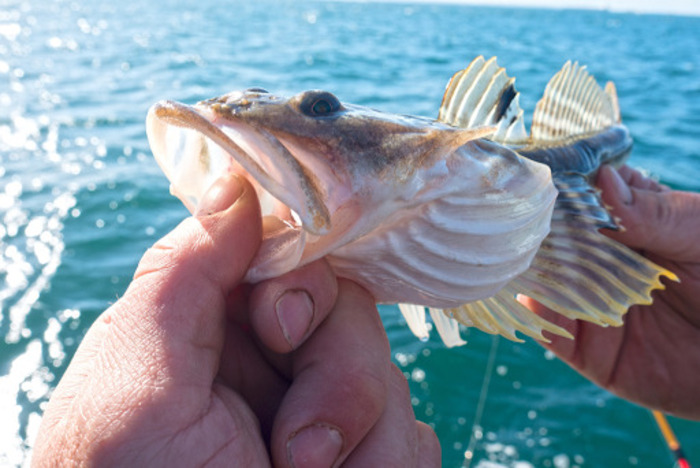
Bullheads
Bullheads are a popular catch among fishermen in Michigan Lake. These small to medium-sized species are known for their stout bodies and rounded heads. Bullheads can be found in shoals with rocky lakeshores, where they feed on small crustaceans and insects. They are native to Michigan Lake and are prized for their delicious flavor.
Largemouth Bass
Largemouth Bass are a prized game variety in Michigan Lake. They are known for their large mouths and powerful strikes. They can be found near vegetation and submerged structures, such as fallen trees or cliff areas. Largemouth Bass are native to Michigan Lake and provide an exciting challenge for fishermen.
Northern Pike
Northern Pike is a predatory variety that inhabits the waters of the lake. These large specimens are known for their long bodies and sharp teeth. They can be found in both shoals and deeper areas of the lake, often near vegetation or cliff areas. Northern Pike are native to Michigan Lake and offer a thrilling catching experience.
Lake Sturgeon
Lake Sturgeon is an ancient and majestic species native to Michigan Lake. These prehistoric-looking specimens can reach impressive sizes and are known for their bony plates and elongated bodies. Lake Sturgeon prefers deeper waters and can sometimes be found near cliff areas. Due to their protected status, catch-and-release practices are encouraged when catching Lake Sturgeon.
Yellow Perch
Yellow Perch are a highly sought-after panfish in Michigan Lake. These small, colorful specimens are known for their distinctive yellow coloration and vertical stripes. Yellow Perch can be found near cliff areas and vegetation, where they feed on small aquatic insects and other invertebrates. They are native to Michigan Lake and provide a delicious meal for fishermen.
Walleye
Walleye are prized for their delicious flavor and challenging nature. They are known for their large, glassy eyes and sharp teeth. Walleye can be found in various depths of Michigan Lake, often near cliff areas or drop-offs. They are native to Michigan Lake and are a favorite target for many fishermen.
Channel Catfish
Channel Catfish are a popular choice for fishermen seeking a thrilling angling experience in Michigan Lake. They are known for their barbels and scaleless bodies. They can be found in deeper areas of the lake, near cliff areas, or submerged debris. Channel Catfish are a non-native species in Michigan Lake but have established a stable population.
Crappie
Crappies are a favorite among fishermen in Michigan Lake. These small to medium-sized specimens are known for their silvery bodies and prominent dorsal fins. Crappies can be found near vegetation, submerged structures, or drop-offs. They are native to Michigan Lake and provide an enjoyable catching experience for fishermen of all skill levels.
Muskellunge
Muskellunge, also known as muskie, is a highly prized game species in Michigan Lake. These large and powerful specimens are known for their aggressive nature and impressive size. Muskellunge can be found in both shoals and deeper areas of the lake, often near cliff areas or weed beds. They are native to Michigan Lake and offer a thrilling challenge for experienced fishermen.
Other Species for Angling in Michigan Lake

Whitefish
Whitefish is one of the most popular species for catching in Michigan Lake. They are known for their delicious and delicate flavor, making them a favorite among fishermen. Whitefish can be found in the deeper parts of the lake, and they are often caught using bottom-catching techniques. They are known to put up a good fight, providing an exciting catching experience for fishermen.
Sea Lamprey
Sea lampreys are an invasive species in the Great Lakes, including Michigan Lake. Although they are not a preferred target for fishermen, it’s important to mention them due to their impact on the environment. Sea lampreys attach themselves to other species, such as trout and salmon, and feed on their blood and body fluids. Their presence has had a significant effect on the native fish populations in Michigan Lake.
Rainbow Smelt
Rainbow smelt are small, silver-colored species that are abundant in Michigan Lake. They are a popular target for fishermen, especially during their spawning season in the spring. Rainbow smelt can be caught using various techniques, including dip netting, jigging, and trolling. They are known for their delicious taste and are often used in cooking and frying.
Alewife
Alewives are another invasive species in Michigan Lake. These small, silvery species were introduced to the Great Lakes in the 1960s and have since become a dominant species. While they are not commonly targeted by fishermen, they play a crucial role in the environment of the lake as a food source for larger predatory specimens, such as salmon and trout.
Round Goby
The round goby is a small, bottom-dwelling species that has become prevalent in Michigan Lake. They are known for their aggressive nature and their ability to adapt to various habitats. Round gobies are often caught using bottom-catching techniques with bait such as worms or small jigs. While they are not a preferred target for fishermen, they can provide a fun and challenging catching experience.
The Introduction of Predator Fish Species to Lake Michigan
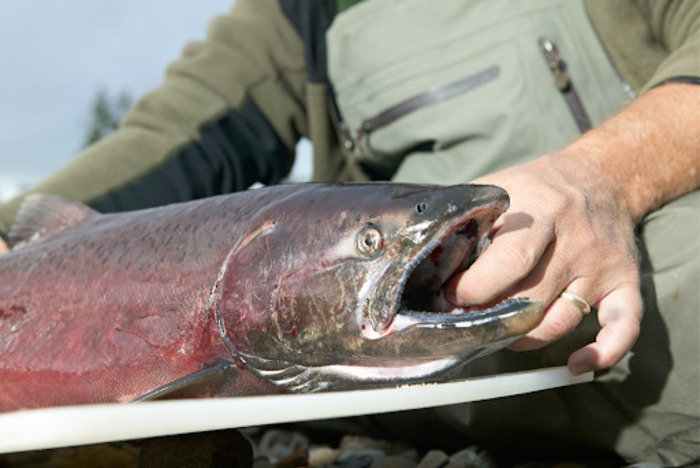
The Impact of Predator Fish Species on Lake Ecosystem
The introduction of predator species to Michigan Lake has had a significant impact on the lake biosystem. These predator specimens, such as the King salmon, have disrupted the natural balance and created both benefits and challenges for the biodiversity of the lake.
One of the main effects of predator species is their impact on the native fish population. As these predator specimens thrive in Michigan Lake, they compete with native species for resources such as food and environment. This competition can lead to a decline in native populations, altering the ecological balance of the lake.
Additionally, predator species have the potential to alter the structure of the lake’s food web. By preying on smaller specimens, they can disrupt the natural flow of energy within the biosystem. This disruption can have cascading effects on other species and ultimately impact the overall health and stability of the biosystem of the lake.
History of Predator Species in Lake
The history of predator species in Michigan Lake is a fascinating tale of human intervention and its consequences. The introduction of non-native predator specimens, such as the King salmon, was initially done with the intention of bolstering recreational catching opportunities. However, the unintended consequences of this decision have become apparent over time.
In the late 1960s, the stocking of Chinook salmon in Michigan Lake began, and their population quickly grew. Fishermen were thrilled by the abundance of these large and prized fish. However, as the years went by, it became evident that the presence of these predator specimens was altering the biosystem of the lake in unexpected ways.
Managing Predator Species in Lake
Managing predator species in Michigan Lake is a delicate balancing act. On one hand, these fish provide valuable recreational catching opportunities and support local economies. On the other hand, their presence can disrupt the native fish populations and alter the ecological dynamics of the lake.
To address these challenges, fisheries management agencies have implemented various strategies. These include monitoring the population sizes of predator species, regulating catching quotas, and implementing habitat restoration projects.
By carefully managing the predator fish populations, authorities aim to minimize the negative impacts on the lake biosystem while still allowing for sustainable catching opportunities.
Ecological Effects of Introducing Predator Fish in Lake
The ecological effects of introducing predator fish in Michigan Lake are a subject of ongoing research and study. Scientists are examining how these species interact with other organisms in the lake, including their prey and competitors.
They are also investigating the long-term effects on the lake’s food web and the overall health of the biosystem.
Studies have shown that the introduction of predator species can lead to changes in the distribution and behavior of other species.
For example, some native fish may alter their feeding patterns or move to other areas of the lake to avoid predation. These changes can have far-reaching effects on the entire biosystem, including the vegetation and bottom-dwelling organisms.
What Types of Fishing are Available on Lake Michigan?
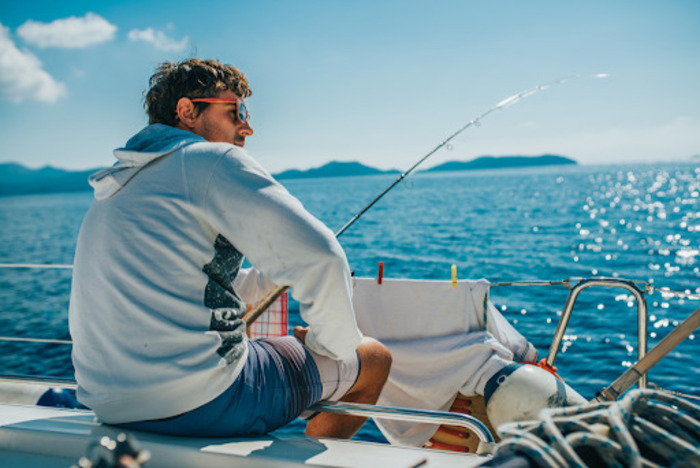
From a Boat
Catching from a boat is a popular method on Michigan Lake, allowing fishermen to access deeper waters where larger fish tend to reside. The lake is teeming with diverse species, including Chinook salmon, Lake trout, Rainbow trout and more.
With proper equipment and knowledge of the topography of the lake, fishermen can orient themselves in the waters and find prime catching spots. Trolling with bait or lures is a common technique employed by boat fishermen, enticing fish with enticing movements and vibrant colors.
From Shore
If you prefer catching from the lakeshore, Michigan Lake offers ample opportunities for a successful catching experience. Many fishermen find joy in casting their lines from piers, jetties, or the sandy beaches that stretch along the lakeshore.
One advantage of lakeshore catching is the ability to target species that come closer to the lakeshore, particularly during certain seasons.
Using live bait or lures, fishermen can entice fish such as bass, walleye, and perch. It’s essential to keep in mind the lakeshore’s structure and be aware of any tributaries that flow into the lake, as these can attract fish seeking food and shelter.
From a Kayak
For those seeking a more adventurous and immersive catching experience, kayak catching on Michigan Lake is a fantastic option. Exploring Michigan’s pristine waters while silently gliding in a kayak provides a unique and tranquil catching experience.
Fishermen can access areas that may be inaccessible by larger boats, giving them the opportunity to fish in secluded spots.
Kayak catching allows for precise casting and maneuverability, making it ideal for targeting specific species such as smallmouth bass, trout, and salmon.
Ice Fishing
During the winter months, when the lake freezes over, ice-catching enthusiasts flock to Michigan Lake to enjoy this thrilling and challenging activity. Ice catching on Michigan Lake offers a unique opportunity to catch fish like perch, trout and smelt.
Fishermen drill holes into the ice, set up their equipment, and patiently wait for a bite. It’s crucial to ensure the ice is thick enough to support your weight and to follow safety guidelines while ice-catching.
Ice Fishing Charters in Michigan Lake
If you’re new to ice-catching or simply prefer the guidance of experienced professionals, booking an ice-catching charter is an excellent option.
Michigan Lake offers a range of reputable ice-catching charters that provide all the necessary equipment and knowledge for a successful outing.
These charters can take you to the best ice-catching locations on the lake, increasing your chances of landing a trophy fish and creating unforgettable memories.
Where Are the Best Places to Fish Lake Michigan?
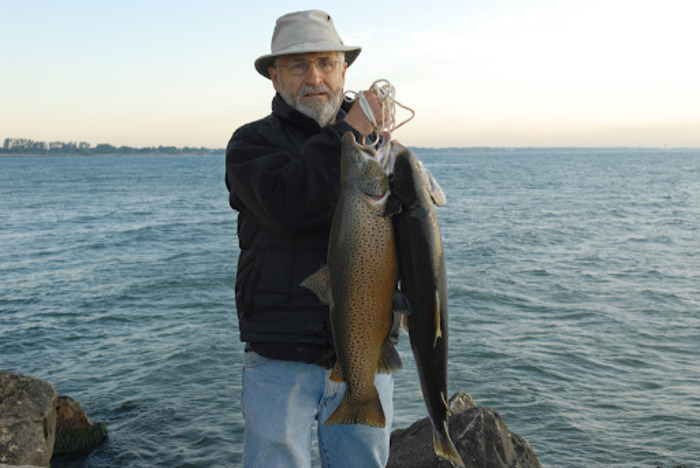
Exploring the North Shore
The North Shore of Michigan Lake is known for its stunning natural beauty and excellent catching spots.
One of the prime locations is the Door County Peninsula in Wisconsin. Here, fishermen can find an abundance of species, including smallmouth bass, walleye, and northern pike.
The rocky lakeshore and shallow bays provide the perfect environment for these species, making it a haven for fishermen seeking a thrilling catching experience.
Uncovering the Charms of the Windy City
Chicago, the vibrant metropolis on the shores of Michigan Lake, is not only famous for its skyline but also for its fantastic catching opportunities.
Along the city’s lakefront, fishermen can cast their lines and try their luck at catching king salmon, coho salmon and rainbow trout. These species thrive in the diverse biosystem of the lake and are highly sought after by both locals and visitors.
Discovering the Michigan Waters
On the Michigan side of Michigan Lake, there are numerous hotspots that attract fishermen year-round. Grand Haven, Holland, and Ludington are just a few of the towns renowned for their exceptional catching.
These areas offer a mix of shoals and deep waters, providing a diverse range of catching experiences. Fishermen can target species such as lake trout, brown trout, and perch, depending on the season and location.
Navigating the Indiana Waters
Indiana may not be the first state that comes to mind when thinking about Michigan Lake catching, but it holds its own when it comes to catching opportunities.
The Indiana Dunes National Park, located along the southern shore of Michigan Lake, offers access to some incredible catching spots. Fishermen can expect to catch species like largemouth bass, yellow perch, and rainbow trout.
The park’s sandy beaches and clear waters create a picturesque backdrop for a memorable catching adventure.
Lake Michigan Seasonality
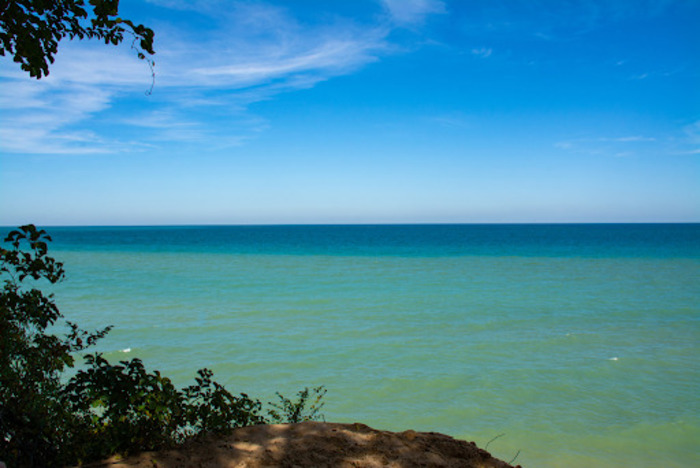
Early Summer: A Time of Spawning and Growth
Early summer marks a crucial period in the fish life cycle. Many species, such as king salmon and rainbow trout, spawn during this time. The warming waters provide optimal conditions for successful breeding. Fishermen eagerly await this period, as the lake becomes a hub of activity with fish moving closer to the lakeshore. The abundance of baitfish attracts species, creating excellent opportunities for fishermen to reel in a prized catch.
Fall: The Season of Transition
As the summer comes to an end, Michigan Lake undergoes a transition. Cooling temperatures encourage fish to migrate and move to different areas of the lake. King salmon, in particular, embark on their upstream journey to spawn. This annual spectacle draws fishermen from far and wide to witness the impressive display of nature’s cycles. As the season progresses, trout and other species become more active, making fall an exciting time for catching enthusiasts.
Winter: A Challenging Adventure
Winter on Michigan Lake presents a unique set of challenges for fishermen. The freezing temperatures and icy conditions require additional preparation and caution. However, the rewards can be great for those who brave the elements. Ice catching is a popular activity during this time, with fishermen targeting species like perch and lake trout. The solitude and peacefulness of the frozen lake create a serene environment for those seeking a winter-catching adventure.
Spring: Rebirth and Renewal
As the ice melts and the days grow longer, Michigan Lake awakens from its winter slumber. Spring brings new life to the lake, with species returning to the shallower waters near the lakeshore. The changing water temperatures and increased sunlight trigger a surge in baitfish populations, attracting larger predatory fish. Fishermen can anticipate excellent catching opportunities during this time, as the lake teems with activity and the chance to catch various species.
Seasonal Highlights: What to Expect at Different Times of the Year in Lake
- Early summer: Spawning season for King salmon and steelhead, increased fish activity near the lakeshore.
- Fall: Migration of species, particularly King salmon, and increased activity of trout.
- Winter: Ice angling for perch and lake trout, serene and peaceful surroundings.
- Spring: Return of species to shallower waters, abundance of baitfish, excellent catching opportunities.
Lake Michigan Rules and Regulations

Angling License and Permits
To enjoy the thrilling experience of catching in Michigan Lake, it is important to ensure that you have the necessary angling license and permits. These requirements help maintain the sustainability of the biosystem of the lake and protect its diverse species.
Obtaining an Angling License
Before you embark on your catching adventure, make sure to obtain the appropriate angling license. The state of Michigan requires all fishermen aged 17 and above to possess a valid angling license. You can easily acquire this license online through the Michigan Department of Natural Resources website. Be sure to familiarize yourself with the specific regulations and fees associated with the license.
Special Permits
In addition to the catching license, certain catching activities in Michigan Lake may require special permits. For example, if you plan to target King salmon, a popular species native to Michigan Lake, you may need to obtain a Salmon Angler Harvest Tag. This tag allows you to harvest a specific number of King salmon within the designated regulations. Make sure to check the latest guidelines to ensure compliance with the rules.
Navigating the Legal Waters
When fishing on Lake Michigan, it is important to guide in legal waters and follow established rules and regulations. Failure to comply with these regulations can result in fines and penalties, and may also harm the delicate balance of the biosystem of the lake.
Seasonal Restrictions
Michigan Lake has specific seasonal restrictions that govern catching activities. These restrictions aim to protect species during critical periods, such as their spawning seasons. Stay informed about the current regulations to ensure that you fish responsibly and contribute to the preservation of the biodiversity of the lake.
Size and Catch Limits
To maintain healthy fish populations, Michigan Lake imposes size and catch limits on certain species. These limits dictate the size and number of fish you can catch and keep. It is essential to familiarize yourself with these limits and release any undersized or excess fish back into the lake. Responsible catching helps sustain the fishery for future generations of fishermen to enjoy.
Read more: Trillium Fishing Lake Guide: Tips, Spots, Weather and More – Oregon
Fishing Etiquette
Respecting the lake, its inhabitants, and fellow fishermen is an integral part of the catching experience in Michigan Lake. By following proper catching etiquette, you contribute to a positive and enjoyable atmosphere for everyone.
Leave No Trace
When catching in Michigan Lake, always clean up after yourself and leave no trace behind. Dispose of any trash or catching gear properly to protect the biosystem and maintain the pristine beauty of the lake and its lakeshore.
Respect Wildlife
Michigan Lake is home to a diverse range of species and other wildlife. Treat these creatures with respect and care. Avoid unnecessary harm to the fish you catch by handling them gently and releasing them safely back into the water whenever possible.
Be Mindful of Others
Michigan Lake attracts many fishermen, and it is essential to be considerate of others sharing the catching spots. Give fellow fishermen ample space and avoid crowding or interfering with their activities. Remember, a friendly and cooperative atmosphere enhances the catching experience for everyone.
Charter Fishing Trips
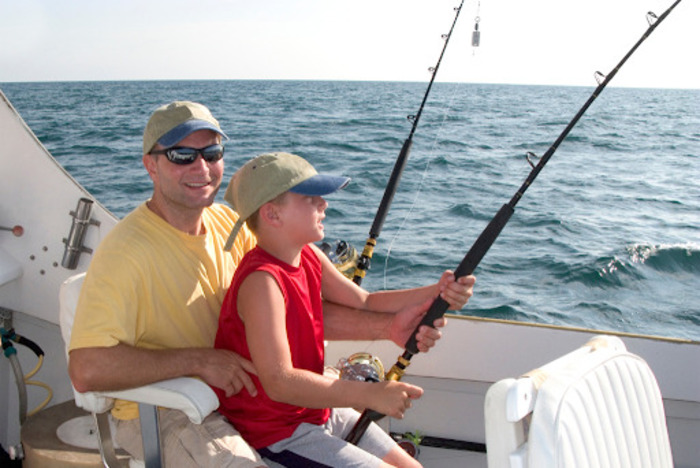
Embark on an Unforgettable Charter Fishing Trip
Charter catching trips at Michigan Lake offer a unique opportunity to explore the vast waters and abundant species that call this lake home. Whether you’re an experienced angler or a novice, these charter services provide everything you need for a successful and enjoyable catching experience.
Some of the top charter catching services available at Michigan Lake:
Jack’s Charter Service
Jack’s Charter Service is a premier charter catching provider with a team of experienced captains who are passionate about creating memorable catching experiences. With their extensive knowledge of the waters of Lake Michigan, they plot a route to the best fishing spots, ensuring an exciting and rewarding trip.
Jack’s Charter Service caters to all skill levels, providing a personalized catching experience tailored to your preferences.
Bucket List Fishing Charters
If you’re looking for an adventure of a lifetime, Bucket List Fishing Charters is the perfect choice. Their experienced guides are committed to making your catching trip truly unforgettable.
With state-of-the-art catching equipment and a deep understanding ecosystem of Michigan Lake, they guarantee an exceptional charter catching experience.
Chartering with Bucket List Fishing Charters will give you the opportunity to reel in-game fish like chinook salmon and steelhead, creating memories that will last a lifetime.
Dan Nealy’s Fishing Buddies
For those seeking a more intimate and personalized catching experience, Dan Nealy’s Fishing Buddies is the ideal choice. With a focus on small-group charters, they provide a friendly and relaxed atmosphere that is perfect for family outings or bonding with friends.
Their experienced guides will take you to some of the best spots Michigan Lake has to offer, where you can angle for a variety of species native to the lake.
From the thrill of reeling in a trophy catch to the serenity of being out on the water, a charter catching trip with Dan Nealy’s Fishing Buddies is an experience you won’t want to miss.
Last Call Sportfishing Charters
Last Call Sportfishing Charters specializes in creating exciting and action-packed catching adventures on Michigan Lake. With their expert guides and top-of-the-line equipment, they ensure that every angler has a thrilling and successful catching experience.
Whether you’re targeting King salmon, steelhead, or other species, Last Call Sportfishing Charters will take you to the most productive catching grounds. Get ready to cast your line and enjoy the adrenaline rush of reeling in your next big catch.
Pro Fish’n Sea Charters
Pro Fish’n Sea Charters offers a wide range of catching trips tailored to meet the needs of fishermen of all levels. Their professional and knowledgeable guides will provide you with all the assistance and guidance you need to make your catching trip a success.
From casting your line in the shoals to exploring the rocky lakeshore, Pro Fish’n Sea Charters will take you on an adventure to remember. Their commitment to customer satisfaction and their passion for catching make them a top choice for charter catching trips at Michigan Lake.
Conservation Efforts to Preserve Lake-Rich Biodiversity

Understanding the Importance of Fishery
Fishery refers to the variety of species, habitats, and ecosystems found in a specific area. In the context of Michigan Lake, it encompasses the wide range of species and other aquatic life that call this magnificent lake their home. Preserving fishery is essential for maintaining a healthy and balanced ecosystem, as each species plays a vital role in the overall functioning of the lake.
Conservation Efforts to Preserve Lake Fishery
- Habitat Restoration: One of the primary conservation efforts focuses on restoring and protecting the environment within Michigan Lake. This involves reestablishing native vegetation along the lakeshore, creating spawning areas for fish, and removing invasive species that disrupt the natural balance of the ecosystem.
- Sustainable catching Practices: To ensure the long-term viability of the fishery, conservation efforts promote sustainable catching practices. This includes implementing catch limits, size restrictions, and seasonal closures to protect fish populations and allow them to reproduce and grow.
- Water Quality Monitoring: Maintaining good water quality is crucial for the health of the lake and its inhabitants. Regular monitoring helps identify potential pollution sources and allows for timely intervention to prevent contamination. This includes monitoring nutrient levels, pollutants, and invasive species that may threaten the delicate balance of the ecosystem.
- Education and Awareness: Raising awareness about the importance of the fishery of Michigan Lake and the need for conservation is a critical aspect of preserving this valuable resource. Education programs, public outreach campaigns, and community involvement initiatives help create a sense of responsibility and stewardship among fishermen and the general public.
- Collaboration and Research: Conservation efforts are greatly enhanced through collaboration between government agencies, research institutions, and local communities. Ongoing research and scientific studies provide valuable insights into the ecosystem of the lake, helping inform management decisions and conservation strategies.
Disclaimer: The information provided in this article is based on reliable sources and research. It is always recommended to refer to official catching regulations and local authorities for the most up-to-date information.
FAQs
Q: What are some popular fish species found in Lake Michigan?
A: Michigan Lake is home to a diverse range of species. Some popular species found in the lake include trout, salmon, walleye, perch, and bass. These species offer exciting opportunities for sport fishermen and are known for their tasty flesh.
Q: How long can the fish in Lake Michigan grow?
A: The length of fish in Michigan Lake can vary depending on the species. Trout, salmon, and bass can reach impressive sizes, with some individuals exceeding 30 inches in length. Walleye and perch tend to be slightly smaller, ranging between 10 to 20 inches in length.
Q: Which fish in Lake Michigan exhibit seasonal migration patterns?
A: Trout and salmon are known to exhibit seasonal migration patterns in Michigan Lake. These species navigate the currents, streams, and tributaries during specific times of the year. They often move closer to river mouths and cliff areas, especially around the spawning season.
Q: What are some key features of the fish found in Lake Michigan?
A: The fish found in Michigan Lake are known for their torpedo-shaped bodies, which allow them to navigate through the water with agility. They are well-adapted to low-light conditions and can often be found near underwater structures, such as reefs and submerged trees. These fish are prized for their sport-catching qualities and are highly sought after by fishermen.
Q: Are there any invasive fish species in Lake Michigan?
A: Yes, there are invasive species present in Michigan Lake. One such species is the herring, which competes with native fish for resources. Efforts are being made to manage and control the impact of invasive species on the ecosystem of the lake.
Q: What catching techniques and lures work best in Lake Michigan?
A: When catching in Michigan Lake, using spoons and other artificial lures can yield the best results. Additionally, adjusting your catching techniques based on the target species and the prevailing conditions is crucial. It’s recommended to fish during low-light conditions and pay attention to the seasonal movements of the fish.
Q: Are there any saltwater fish species in Lake Michigan?
A: Michigan Lake is a freshwater lake, and its species are adapted to freshwater environments. Therefore, you won’t find saltwater species in the lake.
Q: What is the “king salmon,” and where can it be found in Lake Michigan?
A: The “king salmon,” also known as Chinook salmon, is a popular species in Michigan Lake. It is known for its large size and feisty nature. King salmon can be found in various areas of the lake, but they are especially abundant around the river mouths and deeper parts of the lake.
Q: What equipment do I need for angling in Lake Michigan?
A: To fish in Michigan Lake, you’ll need appropriate catching gear, including catching rods, reels, lines, and hooks. It’s also essential to have a valid angling license and adhere to local angling regulations. Carrying a variety of lures and baits can increase your chances of success based on the target species.

